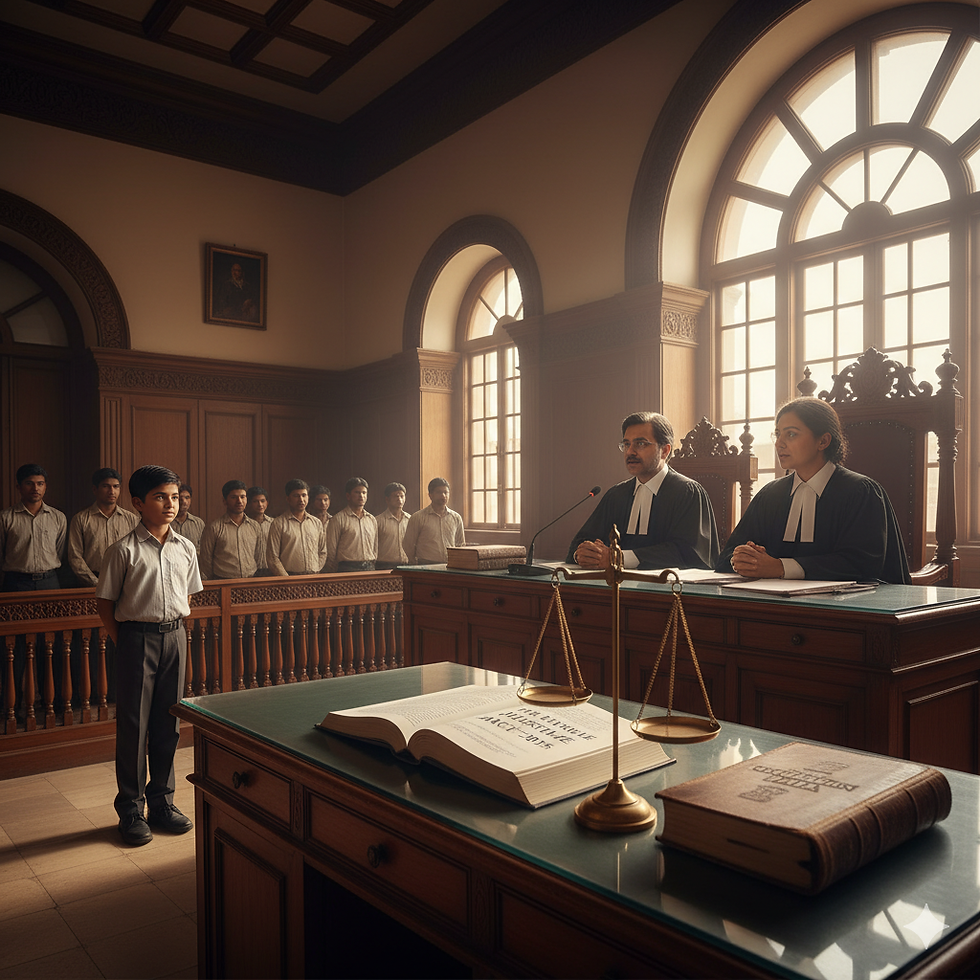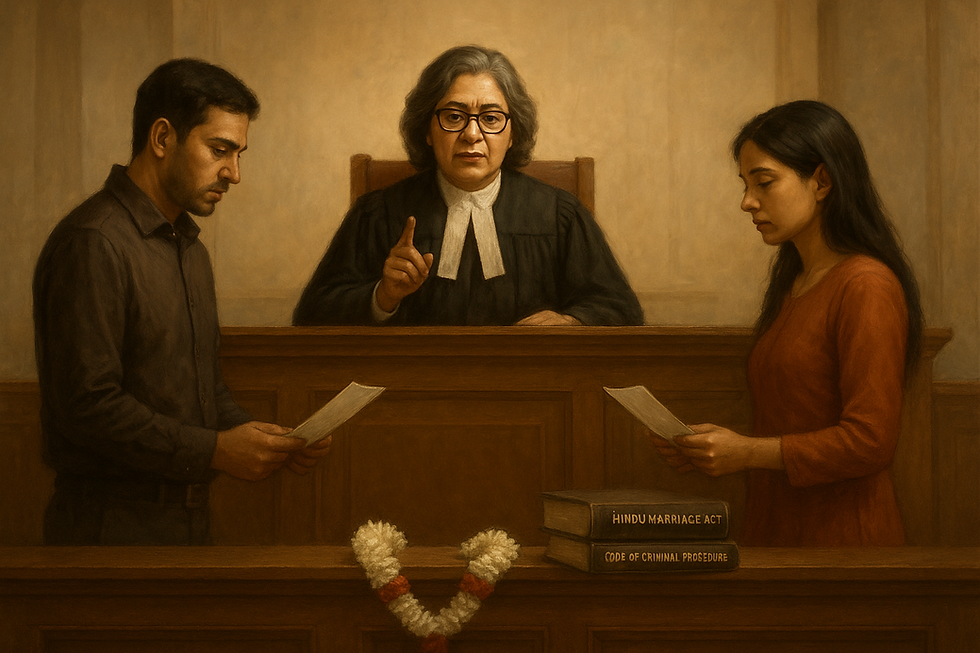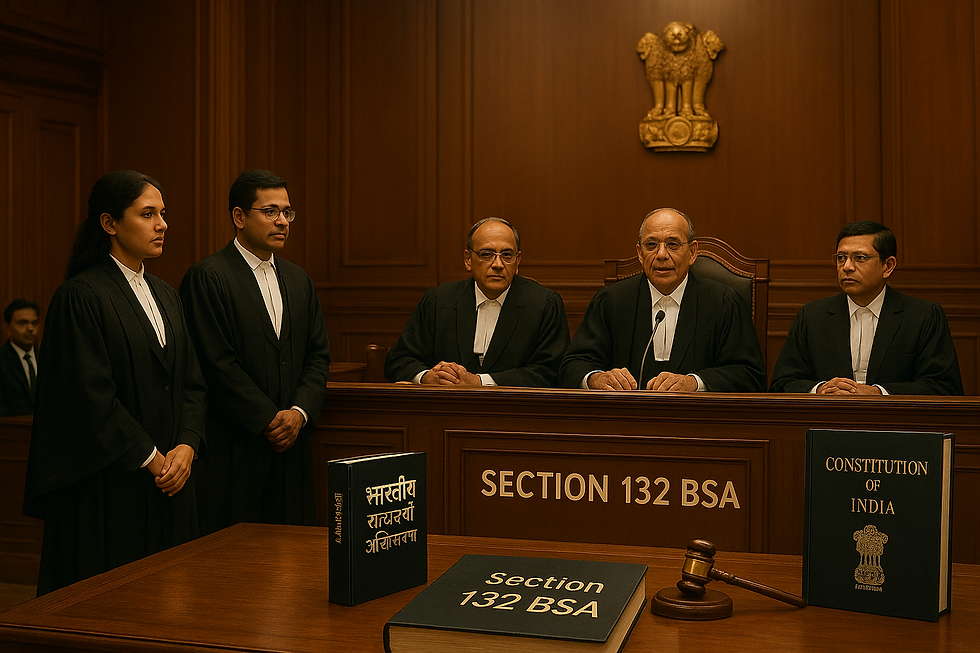Supreme Court Cracks Down on Child Trafficking: A Wake-Up Call for India
- Lawttorney.ai

- Apr 30
- 4 min read
Updated: May 6
Case Title: Pinki v. State of Uttar Pradesh and Another (2025)
Context: In Pinki v. State of Uttar Pradesh and Another, the Supreme Court dealt with the grave issue of child trafficking, involving the abduction of a four-year-old boy and a one-year-old girl from economically vulnerable families.
The case, filed as a Special Leave Petition (Crl.), was brought to the Supreme Court after the Allahabad High Court granted bail to 13 accused traffickers, which was strongly opposed by the victims' families. Responding to this petition, the Supreme Court directed expedited legal proceedings, sending a strong message that justice for children cannot be delayed. This case could set an important precedent for how child trafficking cases are handled in India.

Background of the Case:
The case of Pinki v. State of Uttar Pradesh and Another highlights the devastating reality of child trafficking and the vulnerabilities faced by children from marginalized communities. The case was brought before the Supreme Court after the families of trafficked children, including a four-year-old boy and a one-year-old girl, strongly opposed the Allahabad High Court’s decision to grant bail to 13 accused traffickers. These children, both from impoverished backgrounds, were kidnapped as part of an alleged trafficking network that exploits the most defenseless members of society.
The accused were not minor criminals; they were believed to be part of an organized operation that kidnapped children for the purpose of exploitation. One of the accused was even employed as a nurse in a public health facility, a position that places them in trust with vulnerable individuals, making the crime even more shocking.
The petition that reached the Supreme Court came after the victims' families sought justice, frustrated by the slow pace of legal proceedings and the light treatment of traffickers. This case sheds light on the deep-rooted challenges within the justice system, i.e., delays, inadequate protection for victims, and the exploitation of modern technologies by traffickers to evade detection. Unfortunately, these delays have often led to prolonged waiting periods for justice, leaving victims and their families without closure or timely support.
The Supreme Court’s involvement signifies not only a legal battle but also a moral call to ensure that justice for trafficked children is swift and uncompromising. Through this case, the Court seeks to address the systemic failings and provide a clear message that crimes against children will not be tolerated or ignored.
Supreme Court’s Observation:
Justice J.B. Pardiwala didn’t hold back. In a 95-page judgment, he spoke to the emotional toll on families and the growing sophistication of these trafficking operations. The Court criticized how easily accused traffickers were being granted bail and how drawn-out trials were allowing them to keep exploiting children without fear of consequences.
Supreme Court Ruling
This wasn’t just talk. The Supreme Court laid down a sweeping set of reforms meant to shake the system awake - SC Child Trafficking Guidelines 2025:
No More Easy Bail: Bail for the accused traffickers was canceled immediately. The message? Crimes against children won’t be met with softness.
Justice has to be delivered- Fast and Fair: Trials in child trafficking cases now have to be completed within 6 months so as to avoid endless waiting for justice.
Hospitals on Watch: Hospitals now carry full responsibility for newborns. If a child disappears and ends up trafficked, the hospital could lose its license and also face legal action.
Every Abducted Child Matters: From this point forward, any child reported as missing will be treated as a potential victim of trafficking, and it is essential for law enforcement to act promptly. Cases will no longer be seen merely as "another runaway."
Support for Survivors: Children who are saved will receive counseling, secure housing, and legal assistance. True recovery encompasses more than simply removing someone from harm.
Child-Friendly Courts: To make sure kids aren’t retraumatized while seeking justice, the Court ordered the creation of spaces that make them feel safe and heard.
Manhunt for Offenders: Police have two months, not more than that to track down the remaining traffickers still at large. Special prosecutors will make sure these cases don’t get lost in red tape.
Conclusion
This isn’t just about one case. It’s about changing the mindset of a system that’s failed too many kids for too long.
The Supreme Court’s ruling is more than a legal directive - it’s a moral wake-up call. It tells parents, police, hospitals, and courts: You are all responsible. You all have a role to play in protecting our children.
There’s a long road ahead. But for the first time in a while, there’s a real sense of momentum.Of optimism. This ruling demonstrates that India is beginning to heed, respond, and advocate for the protection and respect of all children.
Ultimately, no child should ever endure pain in silence and no trafficker should ever escape justice.
Empower Your Legal Practice with AI
Are you a legal professional? Stay ahead with our innovative Lawttorney.AI tool. Streamline your legal processes, enhance productivity, and gain a competitive edge. Experience the future of legal technology—try our free Webinar session today!




Comments